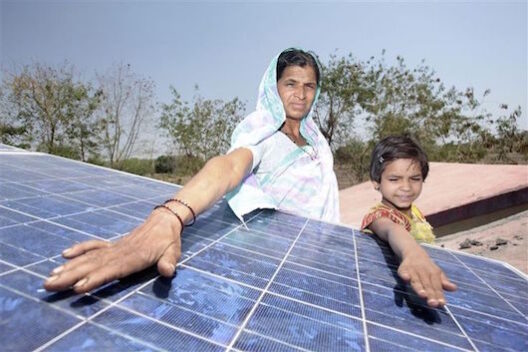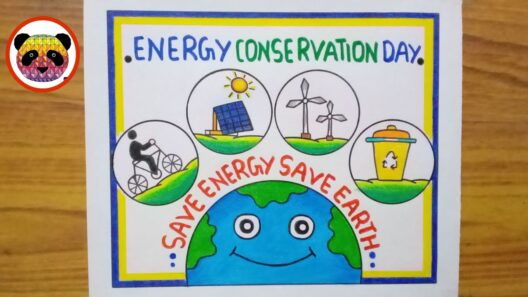Have you ever stopped to ponder just how much energy your school consumes daily? It’s quite the thought experiment. Schools, bustling hubs of learning and collaboration, collectively expend colossal amounts of energy. But what if every student and staff member could contribute to conserving energy? How can we transform our schools into more sustainable environments through simple yet impactful habits?
Conserving energy at school is not merely a noble goal; it is a necessity in our efforts to combat climate change. Every watt saved contributes to a more sustainable future. However, the pathway to energy conservation requires collective diligence and commitment. Let’s delve into practical strategies that students and staff can embrace to become stewards of energy efficiency.
Understanding Energy Consumption
First, it’s essential to grasp the magnitude of energy consumption within educational institutions. Schools utilize energy for lighting, heating, cooling, and powering electronic devices. The majority of this energy derives from non-renewable sources, leading to elevated greenhouse gas emissions. Thus, understanding the intricacies of energy usage is pivotal; this insight can spur individuals to take actionable measures towards conservation.
Formulate Energy-Conserving Goals
To make a genuine impact, start by formulating specific energy-conserving goals. Whether through individual initiatives or collective endeavors, these goals provide a tangible framework for energy conservation. Engaging in discussions about energy metrics can incite motivation among peers. Schools might establish a friendly competition: which class can reduce their energy usage the most over a month? This playful challenge not only sparks enthusiasm but also fosters camaraderie among students and staff alike.
Promote Awareness and Education
Awareness is the first step toward change. Educating students and staff about the importance of energy conservation is imperative. Organize workshops, seminars, or even simple presentations that elucidate energy-saving practices. Integrate these themes into the curriculum—from science classes highlighting the impacts of energy use on the environment to art projects centered around sustainability. Understanding the “why” behind energy conservation empowers individuals to take initiative.
Light it Right
Lighting tends to be one of the most significant areas of energy waste in schools. Let’s consider the age-old habit of leaving classroom lights on when they’re unneeded. A collective effort to turn off lights upon exiting a room can have substantial consequences. Furthermore, transitioning to energy-efficient LED lighting can drastically reduce energy consumption while enhancing the quality of illumination. Encourage students to open blinds and utilize natural light whenever feasible, creating a more pleasant learning environment while conserving resources.
Temperature Control
Heating and cooling systems are major contributors to a school’s energy expenditure. Simple habits can lead to remarkable savings. For instance, turning thermostats down by a degree in the winter and up a degree in the summer can yield significant reductions in energy use. Encourage staff to dress appropriately for the season rather than relying solely on artificial heating or cooling. Establishing a school-wide norm for appropriate classroom temperatures can enhance comfort without excessive energy dependencies.
Encourage Technology Wisely
Technology is often both a boon and a bane when it comes to energy conservation. While devices such as computers and projectors can enhance learning, they can also drain significant energy if not managed properly. Promote the habit of shutting down computers and other electronic devices when not in use. Installing smart power strips can mitigate phantom loads, as devices consume energy even in standby mode. Training staff and students to utilize technology responsibly creates a culture of mindfulness around energy consumption.
Implement Recycling and Reuse Programs
Waste management intersects with energy conservation in ways that may not be immediately apparent. The process of producing new goods consumes energy, while recycling and reusing can substantially mitigate these demands. Develop recycling programs within schools, encouraging students to separate recyclables from general waste. Create avenues for using secondhand materials for projects, thus reducing reliance on newly manufactured items. Through these efforts, students not only contribute to energy conservation but also cultivate a consciousness of resource management.
Foster a Culture of Sustainability
Sustainability should permeate the ethos of the educational institution. Encourage clubs and organizations focused on environmental stewardship. Support initiatives focused on gardening, composting, and renewable energy education. Developing a culture of sustainability necessitates leadership from both students and administrative staff. When sustainability is championed at all levels, it becomes an integral part of the school’s identity, inspiring ongoing commitment to energy conservation.
Monitor and Celebrate Progress
Monitoring energy consumption creates accountability. Schools can utilize tracking systems to monitor energy usage and assess the effectiveness of implemented strategies. Regularly sharing the outcomes with the student body not only keeps everyone informed but also highlights the positive impact of their combined efforts. Celebrate milestones achieved in energy conservation as a team, reinforcing the notion that every contribution counts.
In conclusion, the challenge of conserving energy at school may seem daunting, but simple, mindful habits can create real change. By fostering awareness, forming goals, and building a culture of sustainability, schools can reduce their energy consumption and contribute to a healthier planet. Every switch flipped off, every device powered down, and every ounce of effort collectively leads to a brighter, more sustainable future for our environment. So, what small step will you take today to conserve energy at school?







